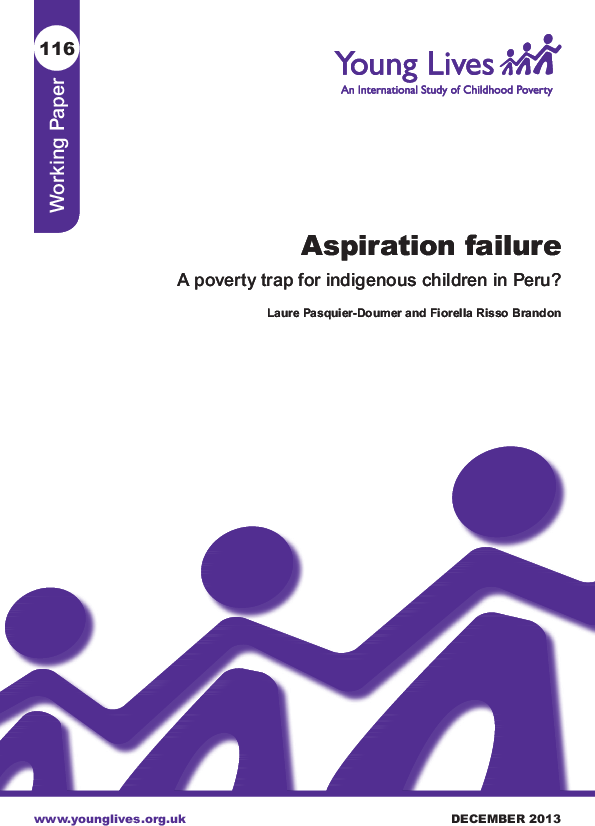
Study: Research
Aspiration Failure: A poverty trap for indigenous children in Peru? Young Lives Working Paper No. 116
Publication year:
2013
English
Format:
pdf (1.2 MiB)
Publisher:
ODID, Oxford Department of International Development,Young Lives
This paper aims to contribute to understand the mechanisms underlying the complex exclusion process of indigenous people in Peru, by analysing the role played by aspirations in the investment in education of indigenous children. Aspirations of indigenous children are quite similar to those of non-indigenous children when comparing children with the same socio-economic status. However, indigenous children differ tremendously according to their aspiration gap, that measure the distance between the socio-economic status they aspire to reach and their current one. The distance they have to cover to fill this gap is nearly two times higher than non-indigenous children. But the difference is driven by the highest economic constraints or more limited access to information of indigenous children. This result calls for the rejection of the hypothesis that indigenous children have internalized racial schemas that incorporate beliefs about occupation or about their opportunities, and which would lead to a lack of aspiration for indigenous children.
In addition, this paper shows that large aspiration gap impede indigenous children to adopt forward-looking behaviours, such as investment in education. This paper adopts an original strategy to identify the causal effect of aspiration gap on educational outcomes. It relies on an instrumental variable calculated using the Population Census. Estimates suggest that the aspiration gap for indigenous children is too large, in so far as it has a positive effect on the probability to repeat a grade. The disincentive effect of large aspiration gap on the effort provided at school becomes more important while the indigenous children grow up, as they may be more aware of the distance between their aspiration and their current status. The results lead to the conclusion that aspiration failure is a channel of inequality persistence between indigenous and non-indigenous people. Indeed, the study shows that indigenous children face a large aspiration gap that affects their decision-making process and leads to underinvestment in education.
Read full abstract
Authors
View & Download
Document information
Format
Content type
Country
Region
Topics
Rights
© Author/Publisher
Found a mistake? Help us improve!
If you have noticed a document assigned to the wrong author or any other inaccuracies, let us know! Your feedback helps us keep our data accurate and useful for everyone.
Share
Link
